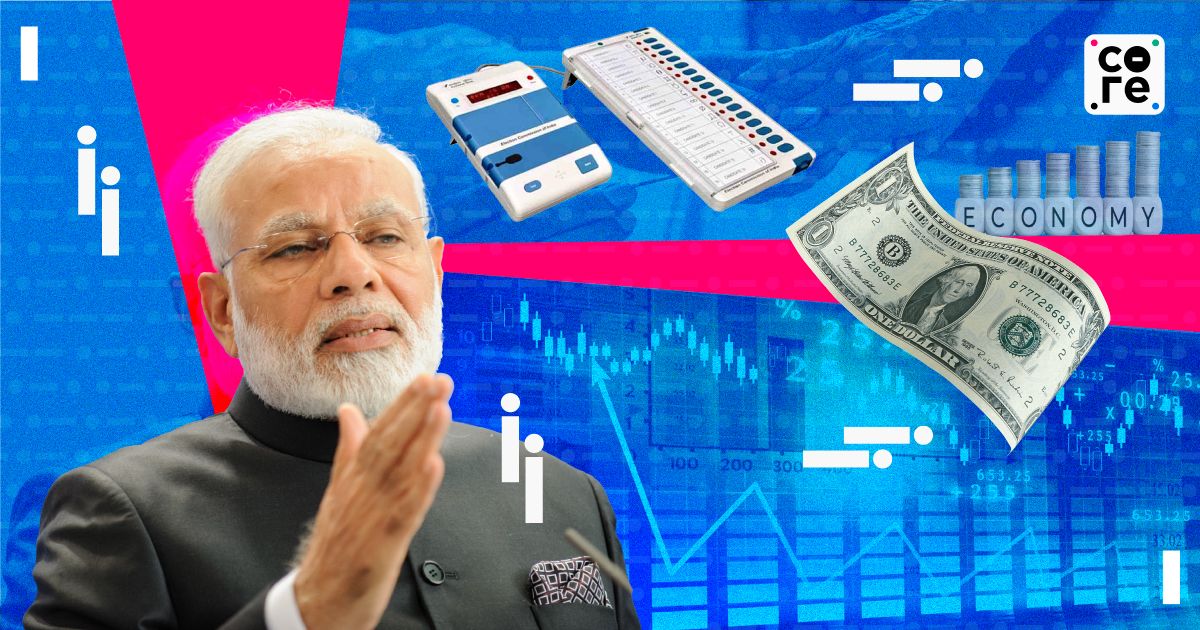Economists and businesses have been trying to understand the relationship between private spending and Goods and Services Tax (GST) collections in India. While some data like the private final consumer expenditure show that people are spending less, GST collections have remained robust.
“GST reflects the overall consumption patterns within the boundaries of a state. We find that it correlates with private consumption expenditure so it can be taken as a proxy for consumption at the state level. But what’s also true is that GST collections could improve because of improved compliance, improved formalisation,” DK Joshi, chief economist at rating agency CRISIL told The Core.
While GST collections might rise due to better compliance resulting from an improved formal economy, it also means that the numbers would capture more consumption, even if the actual consumption hasn’t increased. Additionally, around 33% of private spending, like those on food, alcohol, and petroleum products, isn’t included in the GST. Some services are also excluded, which makes it hard to get a full picture from collections alone.
What CRISIL Study Found?
A new exploratory report by CRISIL says private consumption is the biggest demand driver for the Indian economy and understanding how it stacks up across states is helpful for the corporate sector as well as for policymakers.CRISIL analysed GST data for 17 states that account for 95% of total GST collection. Maharashtra leads with a 20% GST collection for all India followed by Karnataka.
The report found that per capita GST (proxy for per capita consumption expenditure) increases with the rise in per capita income. Interestingly, when it comes to GST collections, growth is not dependent on whether a state is a higher or a lower per-capita income state. In other words, there is not much variation in GST growth across states.
“Almost all states have witnessed growth in GST collections on the average between 12% to 16%. Year-to-year numbers could vary. And this is largely because I think GST was introduced at the same time across India. So whether it’s a rich state or a poor state, everybody has seen the growth in GST collections,” Joshi said.
According to the report, GST growth during the five years (between fiscal 2020 and fiscal 2024) in Telangana (the highest per capita income state in the report’s sample) stood at 14.7%, not much different from 15.6% growth in Bihar (lowest per capita income state. This trend likely indicates a similar pace of adoption of GST across states, irrespective of their income levels.
Since the introduction of GST in 2017, there have been many initial glitches. However, over the last two years, as these issues have been addressed and the system streamlined, the revenue story of GST is starting to unfold. According to Joshi, this trend mirrors many reforms where initial challenges give way to long-term benefits. Additionally, recent data shows that GST collections have exceeded nominal GDP growth, indicating a faster rate of expansion.
“What we also find is that GST introduction has had a positive spillover impact on the income tax collections because once you are in the GST net, I think it becomes difficult to cheat on taxes to put it very bluntly, and we have seen that income tax collections in 2324 have grown by something like 20%,” Joshi said.
How GST Fared?
Since GST subsumed all taxes including excise duty, service tax, and value-added tax, among others, it is expected to provide a better reading of the health of the economy than what was not possible earlier. “I think you will be able to assess even more because you will get information on economic activity at the state level where the goods are doing well, or the services are doing well, I think and also other stuff like consumption pattern across categories of goods I went,” Joshi said.
However, the present GST structure has also been widely criticised for having multiple tax rates. GST rates in India for various goods and services are divided into four slabs, 5% GST, 12% GST, 18% GST, and 28% GST. Critics of GST’s multiple tax rates have questioned why, if the goal of implementing GST was to achieve a uniform tax structure, there is a system with seven different tax rates for various goods.
In fact, the opposition party Congress in its 2024 election manifesto has promised to replace the current GST laws implemented by the ruling Bharatiya Janata Party-led government with GST 2.0. Under this new regime, GST will adhere to the universally accepted principle of being a single, moderate rate (with a few exceptions).
“At the overall level, the GST collections have gone up by something like 12%, which is faster than the nominal GDP growth of 9% and also faster than the consumption growth. I would say that the collections are here to here are continuing to improve faster than the economy is growing,” Joshi said.





